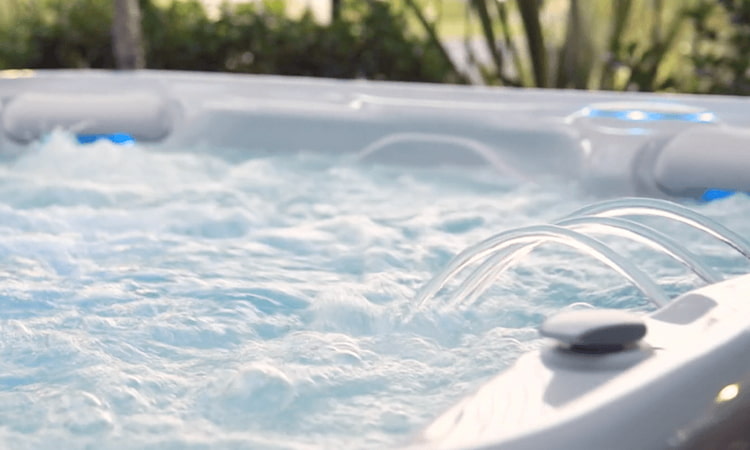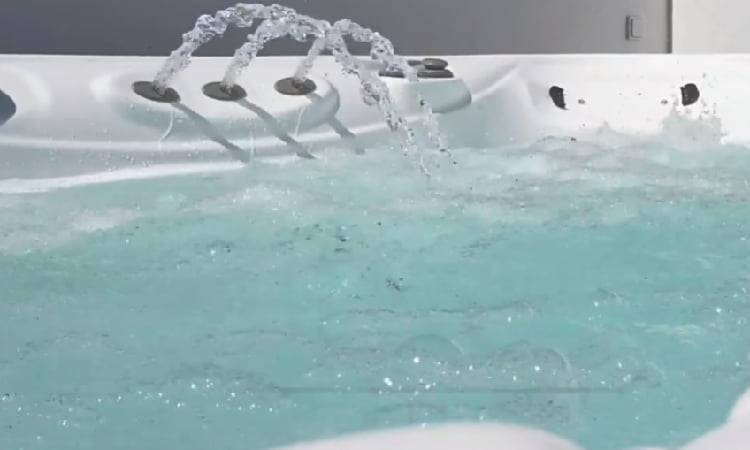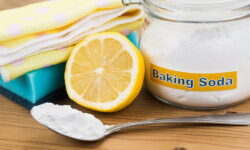You’ve got a hot tub and you’re ready to relax, but how many chlorine tablets do you need? Don’t worry, we’ve got you covered.
The amount of chlorine tablets needed for a hot tub depends on the size of the tub and the manufacturer’s instructions. Generally, for a standard-sized hot tub, you may need 2 to 3 tablets a week. However, the best approach is to regularly test the water and add tablets as needed to maintain the chlorine levels between 2-4 ppm (parts per million). Always follow the specific directions provided on the product packaging.
This guide will help you understand how to properly use chlorine tablets, avoid common mistakes, and ensure your hot tub stays clean and safe. So, don’t sweat the small stuff, we’re here to make your hot tub maintenance a breeze.

Quick Navigation
- Understanding the Role of Chlorine in Hot Tubs
- Determining the Right Number of Chlorine Tablets
- Common Mistakes When Using Chlorine Tablets in Hot Tubs
- The Impact of Over-Chlorination and Under-Chlorination on Hot Tubs
- Proper Storage and Safety Measures for Chlorine Tablets
- Frequently Asked Questions
- Conclusion
Understanding the Role of Chlorine in Hot Tubs
Before you can accurately gauge how many chlorine tablets you’ll need for your hot tub, it’s essential that you understand the role chlorine plays in maintaining water cleanliness and safety. Chlorine is crucial because it neutralizes harmful bacteria and viruses that can lead to health issues if left unchecked.
Think of chlorine as your hot tub’s primary defense mechanism. When it’s introduced to water, it reacts with bacteria, breaking it down into harmless components. This process, known as sanitization, keeps your hot tub water safe and clean, ensuring you can relax without worrying about potential health risks.
But here’s the kicker – chlorine levels in your hot tub need to be monitored and regulated. Too little, and you’re not effectively sanitizing your water. Too much, and you could cause skin irritation or damage your hot tub’s components. That’s why it’s crucial to use the right amount of chlorine tablets.
Determining the Right Number of Chlorine Tablets
You’ll need to consider your hot tub’s water volume and the manufacturer’s instructions to determine the appropriate number of chlorine tablets. Each tablet has a specific chlorine release rate, and that rate is designed for a certain volume of water.
Using too many tablets for your hot tub’s volume can lead to over-chlorination, which is harmful to your skin and eyes. On the other hand, not using enough can result in under-chlorination, leaving your hot tub vulnerable to bacteria and algae.
| Hot Tub Volume | No. of Chlorine Tablets |
|---|---|
| Less than 1,000 Litres (Less than 265 Gallons) | 1-2 |
| 1,000 to 2,000 Litres (265 to 530 Gallons) | 2-3 |
| 2,000 to 3,000 (530 to 800 Gallons) | 3-4 |
| More than 3,000 (More than 800 Gallons) | 4-5 |
Common Mistakes When Using Chlorine Tablets in Hot Tubs
Some folks might not realize they’re making common mistakes when using chlorine tablets in their hot tubs. You’re not alone if you’ve been doing the same. Here’s what you should avoid.
Firstly, never add chlorine tablets directly into your hot tub water. They’re highly concentrated and can damage your tub’s finish. Instead, use a floating dispenser or a chemical feeder.
Secondly, don’t over-chlorinate. Too much chlorine can cause skin, and eye irritation, and even corrode your hot tub components. Monitor your water chemistry regularly using test strips to ensure you maintain the right balance.
Thirdly, it’s a mistake to ignore your hot tub’s pH levels. High pH reduces chlorine’s effectiveness, while low pH can cause chlorine to dissipate quickly. Aim to keep the pH between 7.2 and 7.8.
Lastly, don’t forget to replace your chlorine tablets regularly. Over time, they lose their potency. Replace them every 1-2 weeks, or as needed based on your hot tub’s usage and the results of your water tests.
Avoiding these common mistakes will help you ensure your hot tub remains a safe and relaxing haven.
The Impact of Over-Chlorination and Under-Chlorination on Hot Tubs

In maintaining your hot tub, it’s crucial to understand that both over-chlorination and under-chlorination can lead to significant issues, and you’ve got to strike the right balance.
Over-chlorination can cause eye and skin irritation, corrode metal fittings, and damage the hot tub’s finish. It can also lead to chlorine smell which is not what you’d want when you’re trying to relax. Always remember, high chlorine levels don’t mean cleaner water, but rather, they signify chemical imbalance.
On the flip side, under-chlorination exposes your tub to harmful bacteria, algae, and other microbes. It also makes your water cloudy and can cause foul odors. More worryingly, it can lead to infections like hot tub folliculitis.
So, you see, gauging your chlorine levels is not just about keeping your tub clean, it’s about your health and safety too. Understanding the water chemistry of your hot tub is critical to ensure you’re using the correct amount of chlorine.
Regularly test your water and adjust the chlorine levels as needed. It’s a nuanced task, but once you’ve got the hang of it, maintaining your hot tub becomes second nature.
Proper Storage and Safety Measures for Chlorine Tablets
Proper storage is a must, and you need to take special safety measures when handling your chlorine tablets. These potent chemicals require careful treatment to prevent accidents and maintain their effectiveness. They should always be kept in a cool, dry, well-ventilated area, away from direct sunlight and other chemicals. This helps to avoid any unwanted chemical reactions or degradation of the tablets.
It’s important to store chlorine tablets in their original container, ensuring it’s sealed tightly. This prevents moisture from entering and sparking a potentially dangerous chemical reaction. You should also never mix different types of chlorine tablets, as this can lead to harmful reactions as well.
When handling chlorine tablets, always wear protective gloves and goggles. This minimizes your risk of skin and eye irritation. If you come into direct contact with chlorine, wash the area immediately with cold water.
Lastly, keep these tablets out of the reach of children and pets. They’re highly toxic if ingested and can cause serious harm. Following these precautions will ensure your hot tub stays clean and safe, and your chlorine tablets remain effective.
Frequently Asked Questions
You’re searching for alternatives to chlorine tablets for hot tub sanitation, aren’t you? Try bromine tablets, ozone generators, or mineral purifiers. They’re effective, gentler on the skin, and require less maintenance than chlorine.
You should change your hot tub’s water every three to four months when using chlorine tablets. However, it depends on the usage and balance of chemicals. Regular testing ensures optimal cleanliness and longevity of your tub.
You can use pool chlorine tablets for your hot tub, but they’re not ideal. They dissolve slower and can over-chlorinate your tub. It’s better to use hot tub-specific tablets for optimal maintenance and safety.
Chlorine tablets can corrode your hot tub’s plumbing system over time. They’re concentrated, so they can cause damage if they’re in direct contact with the pipes, leading to leaks or system failure.
Yes, there can be health risks. If you’re using too many chlorine tablets, you could experience skin, and eye irritation, or respiratory issues. Always ensure you’re using the correct dosage for your hot tub’s size.
Conclusion
In conclusion, managing chlorine levels in your hot tub isn’t rocket science. It’s about knowing the right amount of tablets to use and steering clear of common blunders. Over-chlorination or under-chlorination can cause issues, so always stay vigilant.
And remember, safety first! Store your chlorine tablets properly to avoid mishaps. With a little know-how and regular maintenance, you’ll keep your hot tub running smoothly while ensuring a safe, enjoyable soak.


![How to Lower Bromine Level in Hot Tub? [& Signs of High Levels] how to lower bromine level in hot tub](https://hottubtales.com/wp-content/uploads/2023/10/how-to-lower-bromine-level-in-hot-tub.jpg)
![What is a Stabilizer in a Hot Tub? [Types of Stabilizers] what is a stabilizer in hot tubs and how does it work](https://hottubtales.com/wp-content/uploads/2023/10/what-is-a-stabilizer-in-hot-tubs-and-how-does-it-work-250x150.jpg)


![Can You Over Shock a Hot Tub? [What to Do if You Did?] can you over shock a hot tub](https://hottubtales.com/wp-content/uploads/2023/10/can-you-over-shock-a-hot-tub-250x150.jpg)